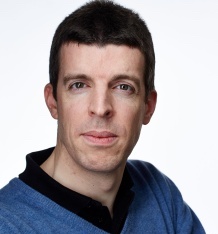We use optical microscopy techniques, such as two-photon calcium imaging, to understand how neural networks in the brain change over time, from single synapses to entire circuits, and how these changes relate to behavior. Our research focuses on the model organism Drosophila melanogaster where genetically identified, comprehensive neural networks underlying adaptive behaviors can be studied. We interpret and guide these experiments using computational modeling of neural circuit dynamics. Molecular, structural, and functional similarities of neural circuits across species suggest that insights gained in the fly brain will also contribute to our understanding of the mammalian brain.
In a second line of research we use machine learning in combination with optical microscopy with the aim of optimizing the temporal as well as spatial resolution of functional imaging in animals engaged in virtual reality behavior.
Discover our homepage here.
Methods
- Two-photon imaging in behaving fruit flies
- Adaptive optics
5 selected papers
- Flores-Valle, A and Seelig JD. (2022) Automated long-term two-photon imaging in head-fixed walking Drosophila. Journal of Neuroscience Methods 368. 109432.
- Vishniakou I, and Seelig JD. (2020) Differentiable model-based adaptive optics with transmitted and reflected light. Optics Express 28.18: 26436-26446.
- Vishniakou I, and Seelig JD. (2020) Wavefront correction for adaptive optics with reflected light and deep neural networks. Optics Express 28.10: 15459-15471.
- Alex T, Vishniakou I, and Seelig JD. (2018) Light scattering control in transmission and reflection with neural networks. Optics express 26.23: 30911-30929.
- Seelig JD, and Jayaraman V. (2015) Neural dynamics for landmark orientation and angular path integration. Nature 521.7551: 186-191.


